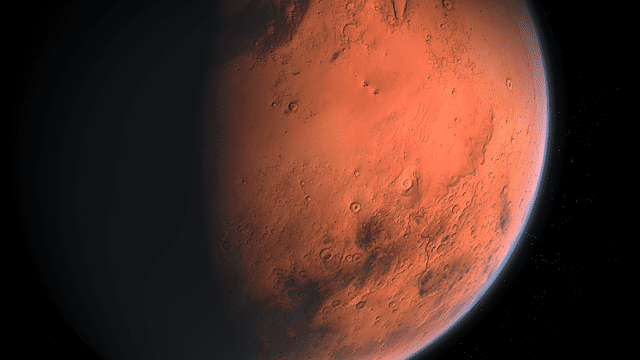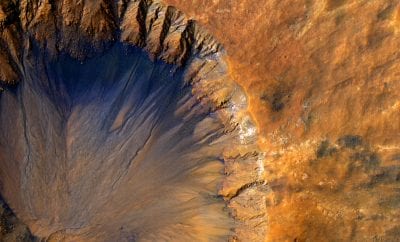
News
Salty Water Underneath Surface of Mars May Harbor Extraterrestrial Life
The Red Planet may seem like a dusty, inhospitable world from our initial studies of it, but a new report suggests that life may exist far beneath its surface. Thanks to a new study published in Nature Geoscience, research shows small pockets of salty water with enough dissolved oxygen may harbor life.

Photo by Tugsataydin via CC BY-SA 4.0
Initially, scientists believed that no organisms would be capable of surviving on Mars due to the lack of oxygen and very thin atmosphere. We have known for some time that water exists on Mars, but only so in the form of ice or hydrated minerals. Up until now, researchers never considered the possible presence of liquid water far beneath the planet’s crust, an identifying characteristic of life.
Using sophisticated computer models, researchers determined key locations where such pockets of water could exist and support extraterrestrial life in the form of microbes. Such areas include the planet’s poles, which are locations where the temperature is lower and the pressure is higher, and contribute to an increased amount of oxygen in the water. Some optimistic hypotheses even claim that these pockets of water are rich enough in oxygen to support more complex organisms, like sponges.
“Amazing work has been done by NASA to look for evidence of past habitable environments,” co-author Woody Fisher, a geobiologist at Caltech says in a press release. “I am a big promoter of looking for current habitable environments, and we can do that by starting to explore if there is liquid water on Mars.”
It has long been believed that Mars was once a planet covered in liquid oceans similar to that of Earth. Evidence of manganese oxide on the surface suggests that Mars had not only oceans, but also a thick atmosphere rich in oxygen capable of supporting life. However, researchers believe that billions of years ago, a series of devastating solar storms wreaked havoc on the planet, stripping it of its atmosphere and causing its oceans to evaporate.
Lead author Vlada Stamaenković is quick to point out that while this study is just a model, this could lead to us eventually searching the salty reservoirs of Mars to determine if there is indeed life on this seemingly barren planet.





0 comments